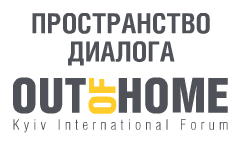
To catch the buyer: the secrets of offline advertising
It is believed that in the era of mass Internet connectedness all other communication channels become meaningless. And this is almost true. But there are some exceptions.
Today you don't need to run in kiosk for newspaper in the morning or rush to the TV for your favorite show in the evening. All you need is with you — on your computer or tablet.
There are terabytes of texts written about the changing in structure of media consumption.
The reason for this change is clear: the advent of the Internet and mobile devices to access it. Information — like any product — "moving toward the consumer", i.e., becomes more convenient and accessible. Naturally, the consumer begins to give more preference to the way of getting the information that's most comfortable for him.
And these trends are already manifested in researches and expressed in numbers.
As we can see, changes in the coverage of each media (the percentage of people who are involved in its consumption) have strong trends: the Internet is growing rapidly, and traditional media (TV, radio, printed Newspapers and magazines) are falling. Amid all the changes "OOH sign" remains stable only (advertising on billboards and city-lights, on transport, in shopping centers and other "outdoor advertising").
And this trend is stable enough to assume its relevance in the future.
So we can predict that, of all information and advertising sources (television, Newspapers, radio, etc.) relevant in the near future there will be only two: the tablet/laptop (mobile device access to the virtual world — the Internet) and outdoor advertising (promotional object around us in real space).
But in this context it is important to understand that the Internet, which is growing rapidly, is not self-sufficient. It's just a new form of delivery of information (content), which was previously delivered to the consumer via radio, television, printed newspapers and magazines.
But the Internet proved and strengthened consumer's desire to receive information in different forms — textual, visual, audio — from a single source. It became a convenient platform for multimedia communication in which the user is both a repeater and a commentator.
Today the consumer may choose a method to obtain information and has the opportunity to influence actively its further spread. And if yesterday we talked mostly about competition between different media, today (and especially tomorrow) it is rather about interacting and complementing each other. And the competition has shifted from the field of media channels towards content producers. And in this context it sounds quite naive when some media declares its self-sufficiency.
The Internet wouldn't be complete without TV/radio/newspaper content.
And newspapers/radio/TV cannot compete in conveniences with the Internet.
Therefore, almost all traditional media more actively will be moved to the online platform.
And the only constant in this multi-media equation will remain outdoor advertising. Which has already become a kind of "anchor of reality" — the link between the user and virtual media world.
About victory
These and other processes of transformation of society and marketing effectiveness of media are constantly being explored by the world's leading advertisers, which have become leading because they understand the importance of a simple formula “dynamics and context." For example, one of the world's largest advertiser, Procter&Gamble invested in developing a new model of advertising costs effectiveness in 2011.
But is it relevant for the Ukrainian business?
And here we come back to the formula "dynamics and context."
Dynamic and trends of Ukrainian economy is clear: despite the current crisis, the economy of our country will be much more open to the "big world" soon (or very soon). What does it mean? First of all, the fact that hundreds and thousands of new producers from other countries, primarily from European Union will come in the Ukrainian market. The increased openness of the economy will lower the barrier of entry for smaller producers and will intensify competition for Ukrainian producers.
Context — Ukrainian consumers, like consumers of any other country, will focus on buying the highest quality product at the lowest price, making selections primarily from the list of brands/manufacturers, whom he trusts.
And in this context, many Ukrainian producers will find themselves in a difficult situation. This will happen tomorrow.
But today Ukrainian producers has a unique opportunity to make the right groundwork for the future. While devaluation of hryvnia makes imported products expensive for the domestic market, there is some time to prepare for the future more intense competition.
And in this regard today, sensible investments in advertising allow you to reach success on the market tomorrow. In other words, to turn the current crisis into victory resource.



